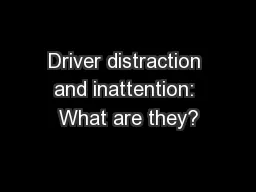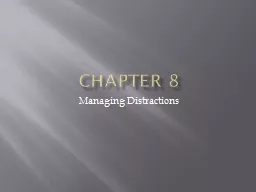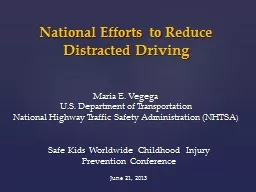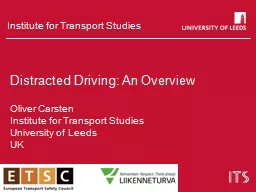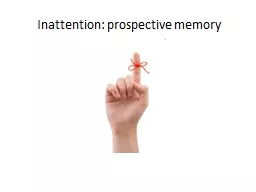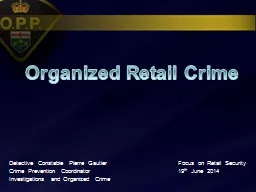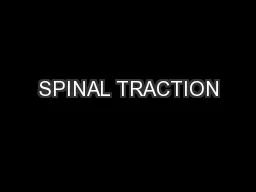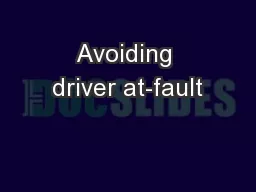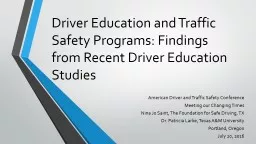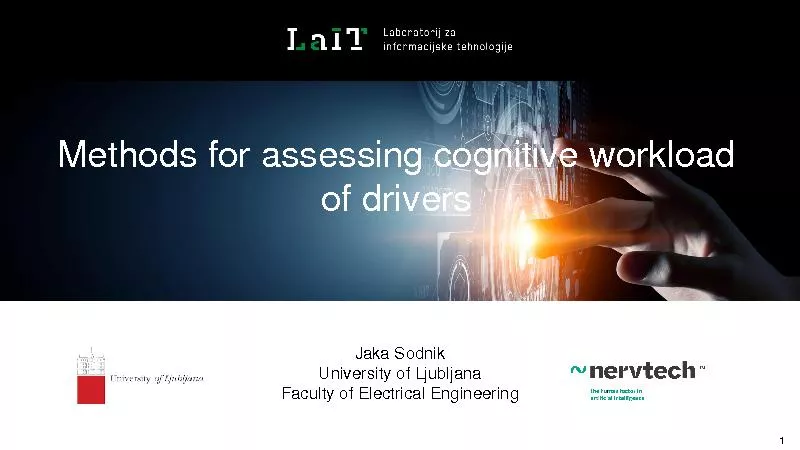PPT-Driver distraction and inattention: What are they?
Author : debby-jeon | Published Date : 2016-03-25
Dr Craig Gordon Alcohol Advisory Council of New Zealand cgordonalacorgnz Presentation at AA Research Foundation Research Symposium 56 th September 2011 Wellington
Presentation Embed Code
Download Presentation
Download Presentation The PPT/PDF document "Driver distraction and inattention: What..." is the property of its rightful owner. Permission is granted to download and print the materials on this website for personal, non-commercial use only, and to display it on your personal computer provided you do not modify the materials and that you retain all copyright notices contained in the materials. By downloading content from our website, you accept the terms of this agreement.
Driver distraction and inattention: What are they?: Transcript
Download Rules Of Document
"Driver distraction and inattention: What are they?"The content belongs to its owner. You may download and print it for personal use, without modification, and keep all copyright notices. By downloading, you agree to these terms.
Related Documents

